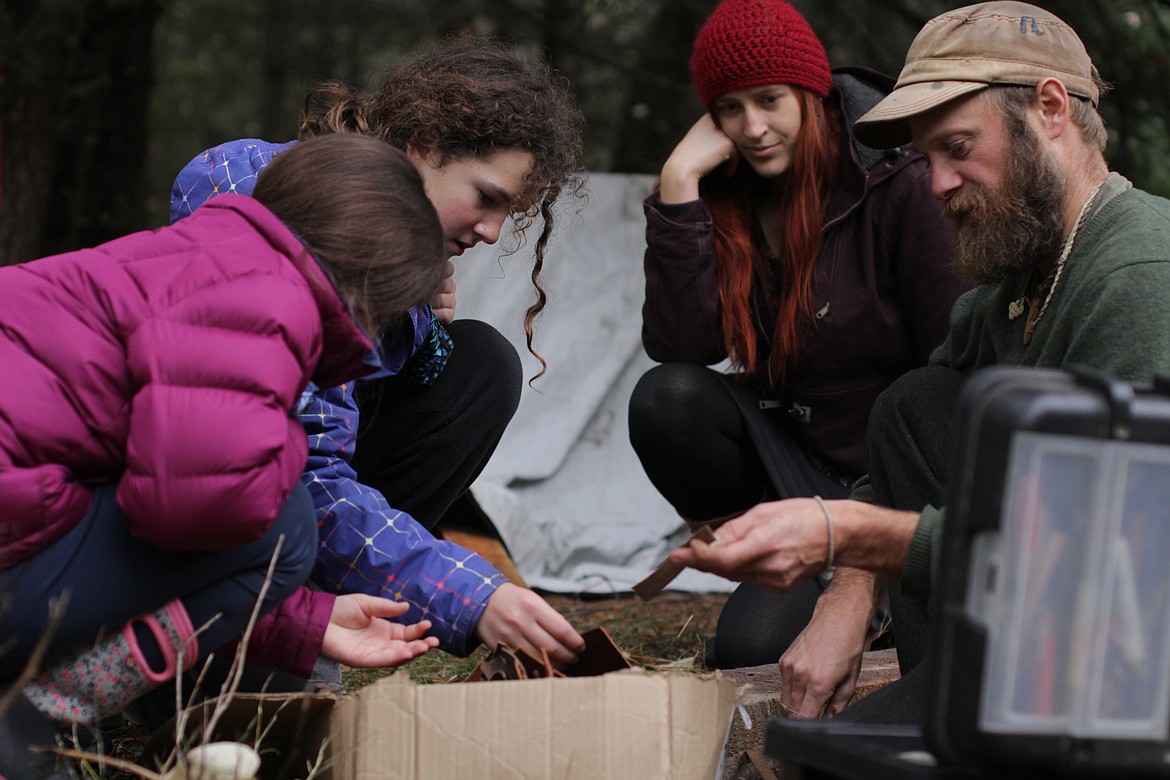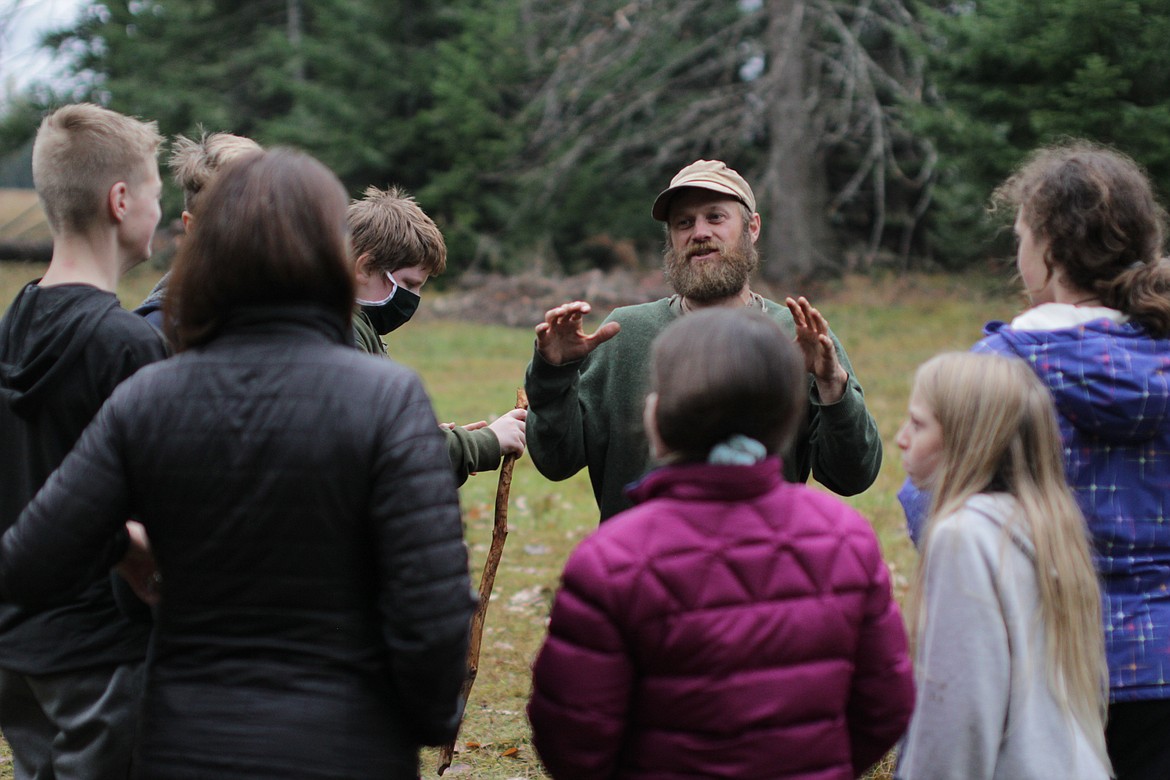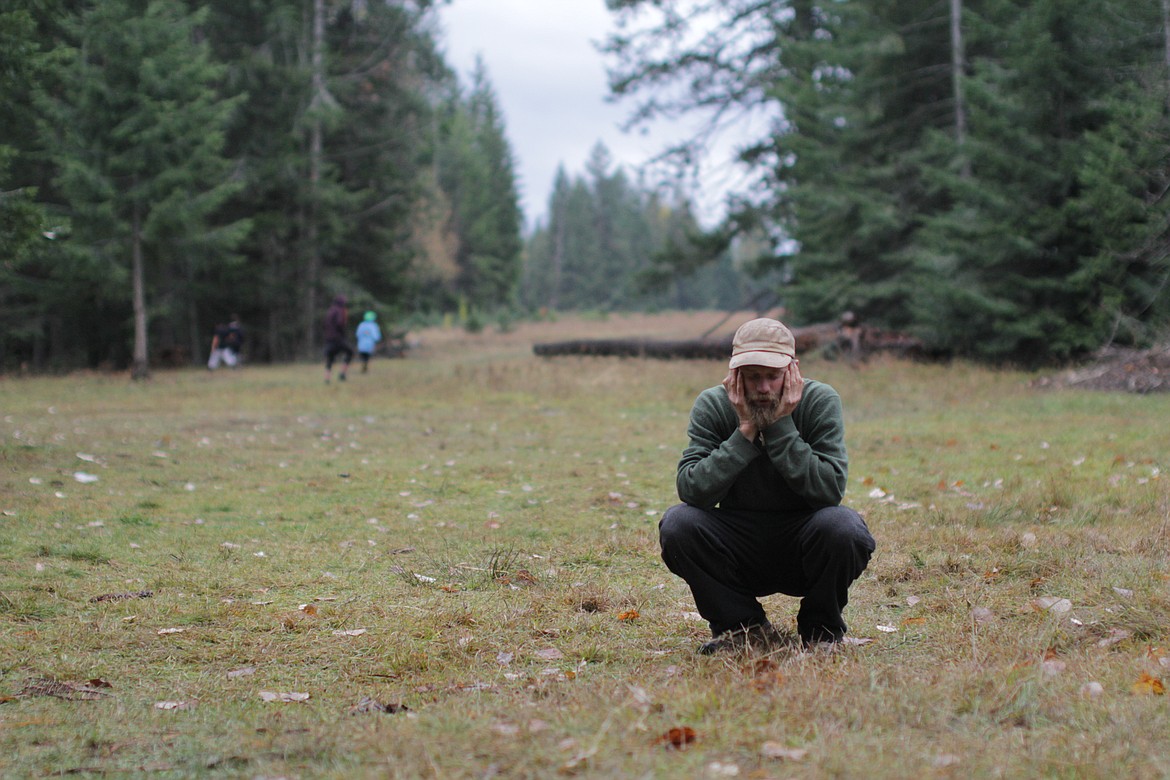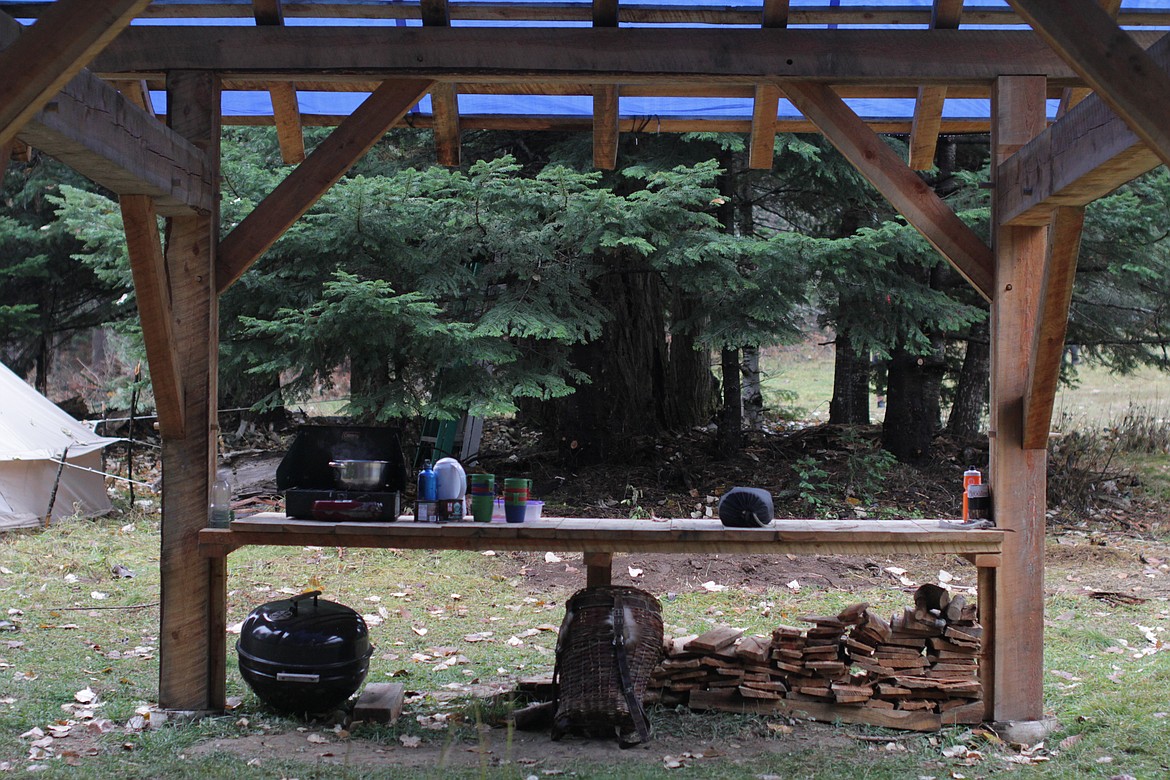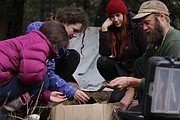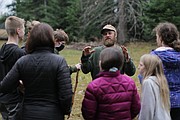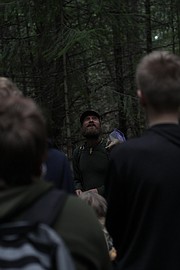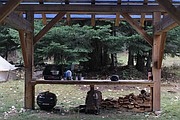Kaniksu Land Trust, Washington Elementary partner for outdoor education
On a damp, overcast Wednesday afternoon, Kaniksu Land Trust Educational Director Dave Kretzschmar led a group of fifth and sixth graders from Washington Elementary down the pine-covered pathways at Pine Street Woods in Sandpoint.
The children chatted, laughed and played games as the group hiked. At one point, Kretzschmar stopped, eyes turned upward as he looked at the trees.
“You see how those trees are stripped of wood?” he said, pointing upward.
Kretzschmar, followed by the group of elementary students, walked further into the trees to look. Porcupines, he explained to the children, like to pull the bark off of trees to eat it. Often, if you see stripped tree bark, you can spot a porcupine nearby.
The group didn’t spot any porcupines that day, but the brief stop along the way is an example of the experiential learning that goes on once a week for some of the students at Washington.
“One thing I strive for is for the kids to not be bored,” Kretzschmar said. “I’m in some ways just a bridge for them, because nature itself is such a neat thing and an interesting thing.”
The program is still in its infancy said Natassia Hamer, principal at Washington Elementary. Right now, the only students participating are those that are on the bus route that runs by Pine Street Woods and some children whose parents live nearby.
Because the students get out of school at 1 p.m. due to the district’s COVID-19 blended learning plan, the afterschool program allows them to learn, socialize and give their parents more time for work.
At first, the school tested out the program with just teachers’ children. After that proved a success, they started adding a few other children.
Because of the ability to social distance, the small groups and better ventilation, children are also not required to wear face masks while at Pine Street Woods.
In the future, the school hopes to expand to more children and other schools in the district, but that is still a ways off, Hamer said.
Currently, there are about 30 students in total participating, with first and second graders on Monday, third and fourth graders on Tuesday and fifth and sixth graders on Wednesdays.
“When kids come off the bus and you can see … they're just excited,” she said. “I’ll be like, ‘hey, how was it?’ and they’re like, ‘It was so awesome.’ And I feel like Dave does a really good job of letting them explore, and then kind of bringing them in, and then letting them explore again.”
Spending time outdoors may also help students with social-emotional learning, and behavioral problems Hamer said.
“I had a couple of parents tell me, like one parent said she notices a difference of just behavior. Like when they’re more active then they’re better able to sit down and do some work after school,” she said.
Kretzschmar said he’s seen the same thing.
“Kids started with real behavioral issues,” he said. “[the program] gives them a sense of belonging.”
Liz Wargo, a researcher at the University of Idaho and a partner in the project, said one of the goals of the project is to find ways to make the school’s location an asset instead of a downfall.
“I think oftentimes the nature of the strengths in rural places are hidden … broadband is tricky, or outfitting schools in a way that makes sense during COVID [is difficult],” she said. “Instead [of focusing on] what’s scarce, what’s in abundance? Idaho, in general, has an enormous amount of open space. That’s rarely seen as a specific strength, but when you’re asking students to do science why wouldn’t that be a strength?”
When children participate in the program, she said, they often end up learning without realizing that they are.
“When kids are outside running around, she said, “they might be very cognitively engaged in a science question [even though] they might not be aware.”
Kretzschmar said working with children’s natural curiosity is a big part of what he does.
“Whenever they find something, I try and also follow up and show my curiosity,” he said.
Finding a way to provide outdoor education had been a goal of his for years, he said. When he got involved with KLT, it gave him the perfect opportunity to do so.
“I think nature is something all humans connect to,” he said. “If you give kids that opportunity, they just thrive in it.”


